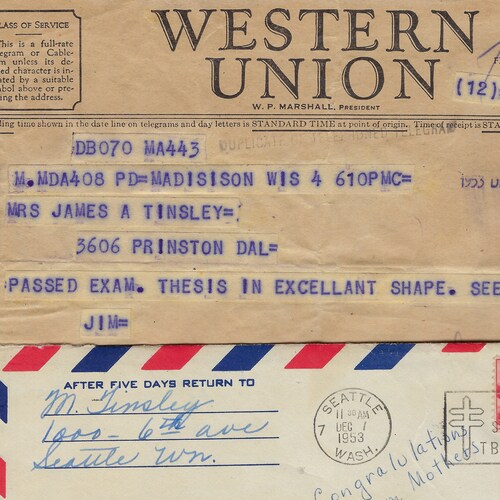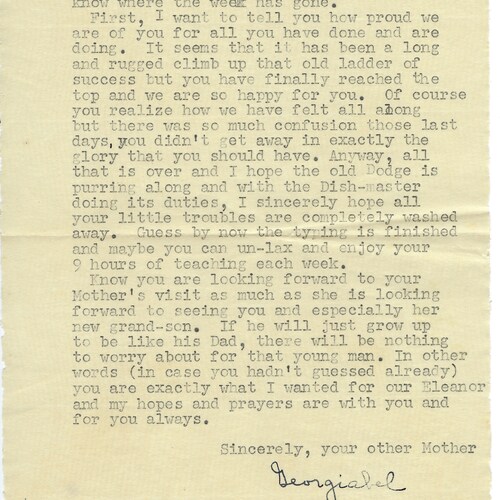James A. Tinsley:
Early Years
The Haynesville Project was built in memory of Dr. James "Jim" Aubrey Tinsley, who was born in Haynesville, Louisiana, in 1924. His father passed away in 1937 during the Depression. As he advanced in his schooling, his mother urged him to keep going beyond high school, but they did not have the funds to send him to college. He cast his net wide in his college applications, and finally he and his family received word that he had received scholarships to attend Baylor College in Waco, Texas. Though it was a long way from their home, his family supported this big endeavor.
His academic journey continued as he got his Master’s at the University of North Carolina (Chapel Hill) and then his Doctorate at the University of Wisconsin (Madison). On December 4, 1953, from his study at the University of Wisconsin, Jim Tinsley wrote a telegram to his wife, Eleanor, who was waiting for word from him in Dallas: “Passed exam. Thesis in excellent shape. See you Sunday. Jim.”




